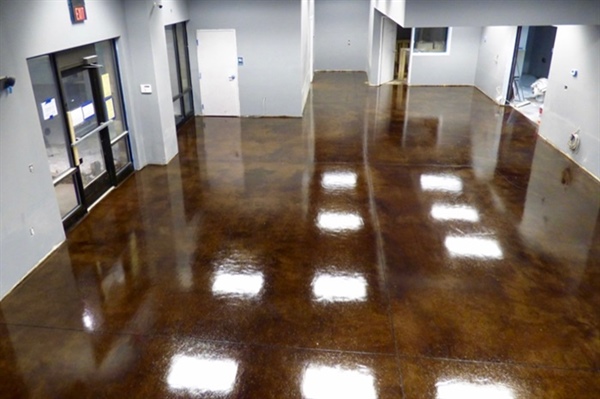The Ultimate Guide to Maintaining Interior Stained Concrete Floors

Interior stained concrete floors offer a sleek, modern aesthetic and exceptional durability. However, proper maintenance is crucial to ensure they retain their beauty and longevity. Whether installed in homes or commercial spaces, these floors require routine care to prevent wear, fading, and damage from foot traffic or furniture.
Understanding the best cleaning and sealing practices will help preserve their vibrant finish and extend their lifespan.
This guide covers essential aspects of maintaining stained concrete floors. By following our expert's recommendations, you can keep your interior stained concrete floors in top condition for years to come.
How Often Should Stained Concrete Be Cleaned and Sealed?
Regular maintenance is key to preserving the integrity of stained concrete. Cleaning should be done weekly to remove dirt, dust, and debris that could scratch or dull the surface. Mopping with a pH-neutral cleaner helps maintain the stain’s vibrancy without damaging the protective seal.
Sealing frequency depends on foot traffic and usage. In residential settings, resolving every 2–3 years is recommended, while commercial spaces with heavy traffic may require annual resealing. A quality sealant protects against stains, moisture infiltration, and wear, maintaining the floor’s polished look.
Using a penetrating or film-forming sealer helps enhance stain resistance and reduces maintenance needs over time. Properly sealed floors are easier to clean and more resistant to discoloration.
What Cleaning Solutions Are Safe for Stained Concrete?
Harsh chemicals and acidic cleaners can erode the sealant and fade the stain. The best cleaning solutions for stained concrete are pH-neutral cleaners specifically formulated for sealed surfaces. These products effectively remove dirt without stripping the protective layer.
Avoid ammonia, bleach, vinegar, or citrus-based cleaners, as they can degrade the finish. Instead, use mild dish soap mixed with warm water or a manufacturer-approved concrete cleaner. Regular damp mopping with these solutions helps preserve the stain’s depth and clarity.
A microfiber mop or soft-bristled brush can help lift dirt from textured surfaces without scratching the sealant, allowing for deeper cleaning. Proper cleaning ensures the stain's longevity while keeping the surface looking polished.
How to Prevent Discoloration and Fading in Stained Concrete?
Discoloration and fading can occur due to prolonged exposure to sunlight, moisture, or abrasive cleaning methods. To prevent these issues, it’s essential to use UV-resistant sealers that block sunlight from fading the stain over time. Interior concrete floors near large windows should be protected with curtains or UV-blocking films.
Routine resealing helps maintain the integrity of the stain, preventing water infiltration that can lead to discoloration. Proper cleaning solutions also ensure that the floor’s color remains intact without unwanted fading or dulling.
For areas with high moisture exposure, such as basements, a moisture barrier beneath the concrete can help prevent water-related staining. Consistently following these preventive measures will keep stained concrete looking vibrant and uniform.
What Are the Best Methods for Repairing Minor Stains or Scratches?
Despite proper care, minor stains or scratches may develop over time. Spot cleaning with a pH-neutral cleaner can remove light stains, while tougher spots may require a gentle scrubbing pad and diluted cleaning solution.
For scratches, applying a fresh coat of sealant over the affected area can often restore the surface. Light sanding, reapplication, and sealant may be necessary if the stain has penetrated the seal.
Professional refinishing may be required to blend the damaged area with the surrounding floor when dealing with deep scratches. Preventive measures such as felt pads on furniture and regular sweeping reduce the risk of scratches.
How Does Furniture and Foot Traffic Affect Stained Concrete Longevity?
Heavy furniture and high foot traffic can wear down the protective sealant, leading to premature fading and surface deterioration. Placing furniture pads under chairs and table legs helps distribute weight evenly, preventing pressure marks and scratches.
In high-traffic areas, using rugs or floor mats reduces direct impact on the stained surface. This is particularly important near entryways, where dirt and grit can be tracked in and cause abrasions over time.
Routine maintenance, strategic furniture placement, and protective measures ensure that stained concrete floors remain in excellent condition for years.
Protect and Maintain Your Stained Concrete Floors
Artisan Concrete Pro specializes in high-quality interior concrete staining and maintenance services in West St. Paul. Whether you need professional sealing, stain repair, or expert advice on prolonging the life of your floors, our team is ready to help.
Contact us today at 612-791-0441 to learn more about our services.